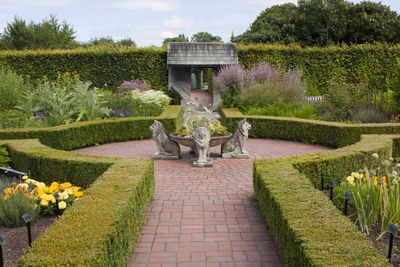Using Ancient Herbs
Most of the common herbs we use today are the same herbs used by our ancestors. In fact, herbal remedies were once handed down from one generation to the next like family heirlooms. In 65 A.D., Dioscorides, a Greek physician and botanist, wrote “De Materia Medica” – a guide to herbs and their uses. Many of the herbs Dioscorides wrote about are still commonly used today and some have been scientifically proven to treat exactly the same disorders that Dioscorides prescribed them for. In most cultures throughout history, the medicinal/culinary herb garden played an important role in daily life.
In times when there were no medical clinics or pharmacies on every corner, people had to rely upon plants for medicine, such as yarrow to treat wounds, creeping Charlie to alleviate colds and flus, or dandelion to reduce fever. Before ice boxes and refrigerators, plants like sage, savory, cranberry, and chokeberry were used to preserve meats. Herbs like rosemary, oregano, bergamot, mint, and burdock were used to make soaps, cleaners, and deodorants or perfumes to mask infrequent bathing practices.
Creating an Ancient Herb Garden
Although today we are not as dependent upon plants as our ancestors were, creating an ancient herb garden and using ancient herbs can “wow” your friends and neighbors. Besides common herbs we still use today, ancient herb gardens also consisted of plants that we oftentimes consider weeds or nuisances. For example:
Dandelions were a popular fever reducer, digestive aid, headache reliever, and treatment for tumors. Plantain was used to treat wounds, heart problems, and gout. Red clover was used to treat arthritis, burns, and rashes.
When creating your own ancient herb garden, don’t be afraid to use some of these “weedy” plants. To guard against the spread, simply grow them in containers and snip off flowers to prevent seeding. Ancient herb gardens were designed differently in each culture, but perhaps the most beautiful and lavish were the ancient herb gardens of the Roman Empire. These were usually large elaborate gardens in full sun, with pergolas or little alcoves to provide shade for the gardener and shade loving plants. Roman herb gardens also consisted of wide paths through tidy, formal, raised herb beds so that the gardener had easy access. Water features, mosaic patterns, and marble statuary were popular adornments in these ancient Roman herb gardens. Many of the features of ancient Roman herb gardens might be a little pricey or impractical for today’s home gardener, but there are many lifelike, lightweight garden decorations available at local garden centers or online. Pinterest and other crafting websites are filled with DIY mosaic projects or different colored and textured bricks, which can also create a mosaic look. Tall cypress plants usually surrounded the herb gardens to divide them from the rest of the gardens or lawn. Cypress is a warmer climate plant, but northern gardeners can get a very similar look with arborvitaes.
